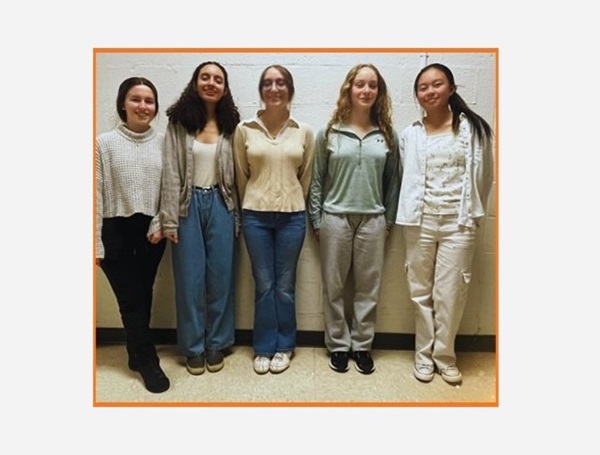HEREFORD, MD—A team of five budding scientists and engineers from Hereford High School has been named one of 60 teams nationwide to win the third annual NASA TechRise Student Challenge.
The honor means that the team’s winning entry – called “Ferrofluid Fiesta – Investigating the Issue of Atmospheric Microplastic (MP) Pollution” – will fly on one of two NASA-sponsored suborbital flights this summer.
The all-women Hereford team – sophomores Cecelia Curtis, Athena Zhou, Amanda Shener, Aya Elamrani-Zerifi, and Rachel Holbrook – began their project as a Hereford Society of Women Engineers activity, said technology teacher Michael Dodd-O. With development guidance from Hereford physics teacher Jeremy Smith and chemistry teacher Charles Fluharty, they also vetted the project with engineers from the James Webb Space Telescope at Johns Hopkins University.
“During the next three months, they will execute their proposal – which uses ferrofluid and neodymium magnets to collect microplastics in the stratosphere – to be ready for launching on the high-altitude balloon this summer,” Dodd-O said. “This is a wonderful group of students, and I am thrilled their proposal was accepted. I know this is only the beginning!”
The Challenge competition is a national contest to engage students in Grades 6-12 in technology, science, and space exploration. Since August, student teams from public, private, and charter schools across the United States and its territories have been crafting experiments for flying on either a high-altitude balloon operated by World View of Tucson, Ariz., or a Xodiac rocket-powered lander operated by Astrobotic of Pittsburgh, Pa. The winning teams include more than 490 students representing 46 states and territories. Hereford is one of just two Maryland high schools represented among the winners and the only one working on the high-altitude balloon project.
According to the TechRise website, winning proposals take on a variety of science and technology challenges, including studying the effects of stratospheric conditions, such as solar and ionizing radiation on plant seeds; testing radiation shielding materials; and using sensors such as thermal cameras and lidar (light detection and ranging) to map a simulated lunar surface.
“Cultivating creativity and curiosity and inspiring students to pursue STEM careers is one of NASA’s most important missions,” said Prasun Desai, deputy associate administrator in the Space Technology Mission Directorate at NASA. “TechRise is a unique opportunity that allows students to gain hands-on knowledge while developing real payloads for flight, and it’s an experience they can carry with them during their educational and early career journeys.”
Each team receives $1,500 to build their experiments, a “flight box” to house it, technical support, and an assigned spot on the flight test this summer. Experiments for the high-altitude balloon will experience about four hours of flight time at about 70,000 feet, with exposure to Earth’s upper atmosphere, high-altitude radiation, and perspective views of Earth. During the flight, the Hereford team’s project will experience unique stratospheric thermal and atmospheric conditions, providing an environment that ground-based testing cannot replicate. The high-altitude balloon will also allow payloads to observe the surface below and collect data on land features such as vegetation and bodies of water.
Some 200 volunteer judges with expertise in engineering, space, and Earth science reviewed entries and selected the nationwide winners. Judges evaluated proposals based on experiment originality, impact on education or society, feasibility within the allotted timeframe and budget, and the quality of the build plan. Criteria were also designed to encourage equitable student participation and geographic representation, and scoring included additional points for Title I-eligible schools.
More in the video below.
Photo via BCPS
Do you value local journalism? Support NottinghamMD.com today.

